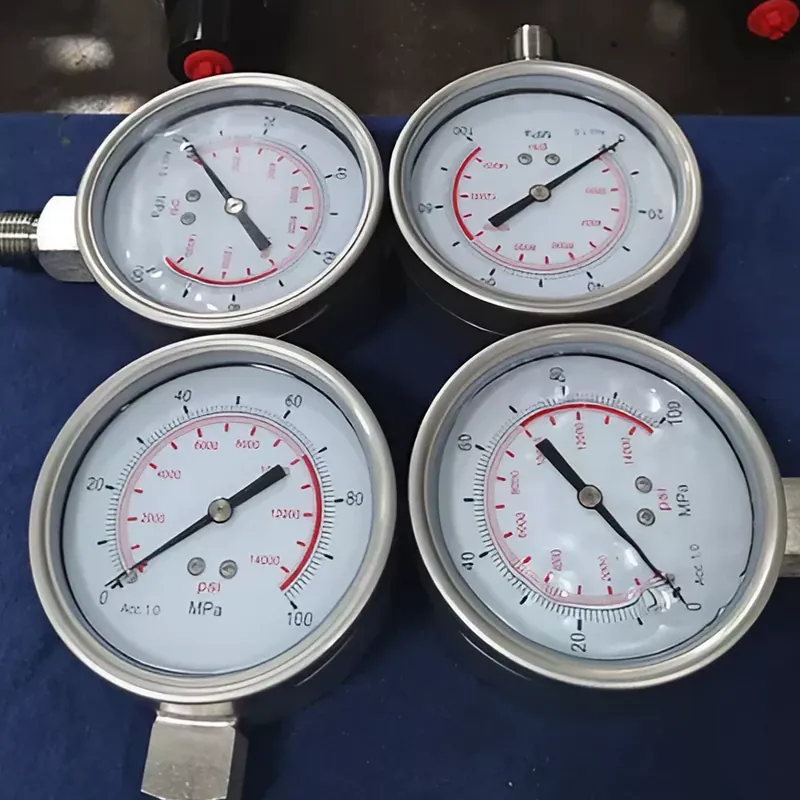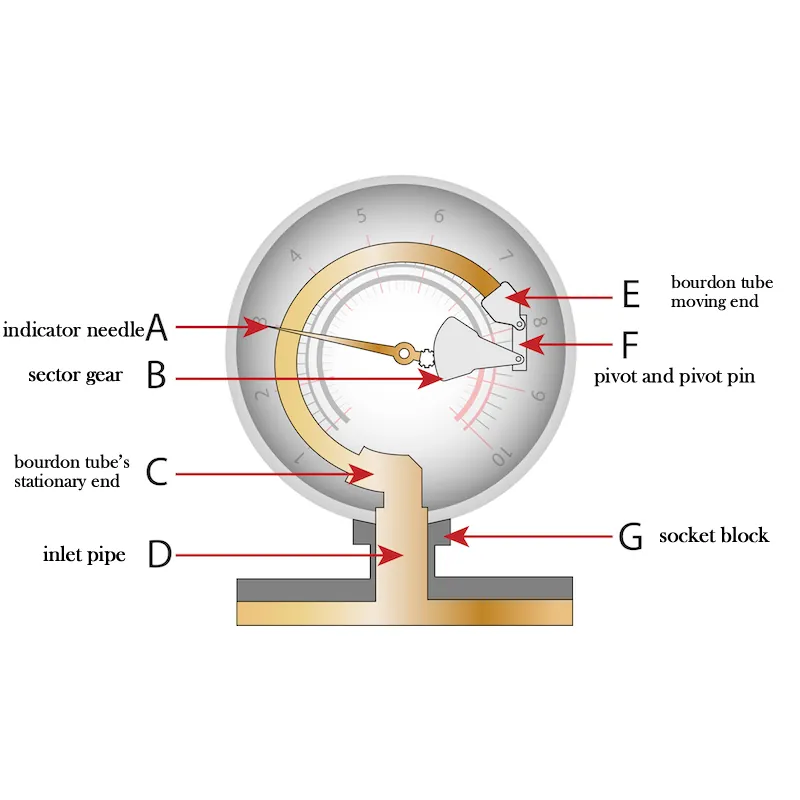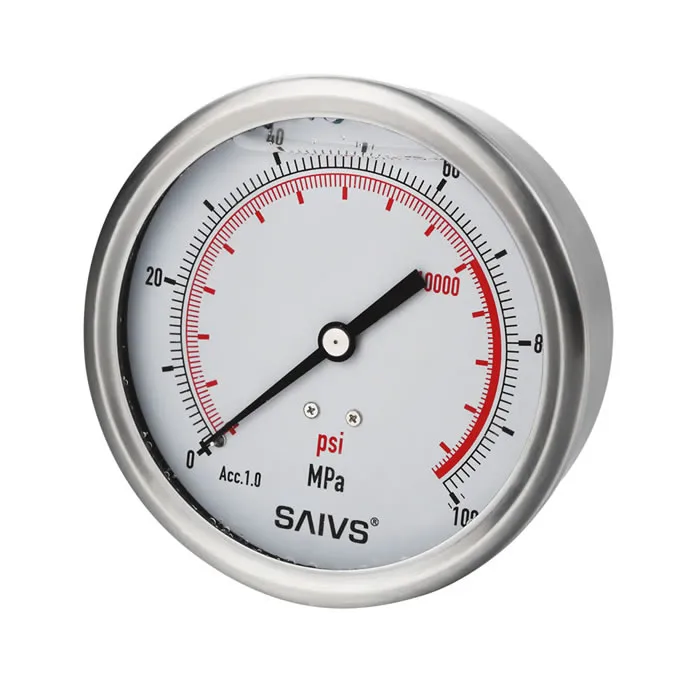The Essential Guide to Hydraulic Pressure Gauges
A hydraulic pressure gauge is a device that measures the pressure of a hydraulic fluid.
It is a vital tool for any Hydraulic System, as it allows operators to monitor the system's performance and ensure that it is operating within safe limits.
What is a hydraulic pressure gauge?
A hydraulic pressure gauge typically consists of the following components:
case: The case protects the internal components of the gauge.
dial: The dial displays the pressure reading.
needle: The needle points to the pressure reading on the dial.
bourdon tube: The bourdon tube is a flexible tube that is connected to the hydraulic system.
As the pressure in the system increases, the bourdon tube expands.
This expansion is converted into a movement of the needle on the dial.

How does a hydraulic pressure gauge work?
The bourdon tube is a key component of a hydraulic pressure gauge.
It is a flexible tube that is typically made of copper or stainless steel.
The tube is connected to the hydraulic system at one end and to the case of the gauge at the other end.
The amount of expansion of the bourdon tube is proportional to the pressure in the system.
This means that the needle on the dial will move a greater distance for a higher pressure.
The dial is calibrated to provide a numerical reading of the pressure.

Applications of hydraulic pressure gauges:
1. Hydraulic presses: In hydraulic presses, pressure gauges are typically mounted on the control panel or near the press cylinder.
They display the oil pressure in the system, allowing operators to monitor and adjust the pressure as needed.
2. Construction equipment: Hydraulic pressure gauges are used in construction equipment such as excavators,
bulldozers, and cranes to measure hydraulic oil pressure.
This ensures that the equipment operates at the correct pressure and helps detect any leaks or issues that could cause damage.
3. Control systems: Hydraulic pressure gauges are used to measure the pressure on hydraulic actuators in control systems,
especially in applications that involve heavy valves.
4. hydraulic pumps: Pressure gauges are used to measure the pressure at the discharge of hydraulic pumps.
Since hydraulic systems operate at high pressure, monitoring the pump pressure helps assess the overall condition of the system,
including potential leaks or blockages that may require maintenance.
5. Lubrication lines: Hydraulic pressure gauges measure the pressure in the supply lines of distributed lubrication systems.
Hydraulic pressure gauges play a crucial role in various industries, ensuring the safe operation and maintenance of hydraulic systems.
How Often Should I Check the Calibration of My Pressure Gauge?
Key factors to consider
Accuracy degradation:
Gauges lose accuracy over time. Regularly checking their performance is essential, even if it seems inconvenient. Early checks prevent potential issues later.
Zero point:
Recalibrate immediately if the pointer deviates from zero or falls outside the zero box. This minimizes process disruptions.
Harsh environments:
Extreme conditions like vibration, pulsation, or high cycle rates accelerate wear and tear, demanding more frequent calibrations.
Tracking and trends:
Clearly label calibrated gauges with serial numbers and dates for easy tracking. This helps identify process trends and predict future issues.
Recommended intervals
Typical: Once every 12 months (annually).
Adjust based on application and process: Reduce the interval based on specific use and operating conditions.
When recalibration isn't possible
Non-removable components: Some gauges have fixed elements that prevent recalibration. Consider replacing them in such cases.
Cost-effectiveness: For low-cost gauges, the cost of calibration might exceed the cost of a new one. Evaluate the economic feasibility.
Seek expert guidance
Quality assurance department: Collaborate with your quality team to establish calibration intervals aligned with your company's specific requirements.
Professional responsibility: Ensuring proper calibration protects yourself, your customers, and your distributors.
Remember: Regular calibration is an investment that safeguards your processes, product quality, and safety.
By following these guidelines, you can establish optimal calibration intervals for your pressure gauges, ensuring their accuracy and reliability over time.
SAIVS:YN Series Hydraulic Pressure Gauge
Pressure Range: 0-1600bar/23000psi
Face Diameter: 63-100mm
Accuracy of full scale: ±1.0-2.0%
Pressure connection: One piece sealing design
Wetted parts: Copper alloy
Case material: Stainless Steel, crimped ring
Window: Polycarbonate or toughened glass
IP class: IP 65
Options/notes: Lower, back entry
Why Choose SAIVS™ as Your Supplier?
With 20 years of industry experience, SAIVS is a leading Chinese manufacturer of high-quality tools, offering competitive pricing and excellent customer service.We pride ourselves on exceptional quality control, extensive experience, and comprehensive after-sales service.
